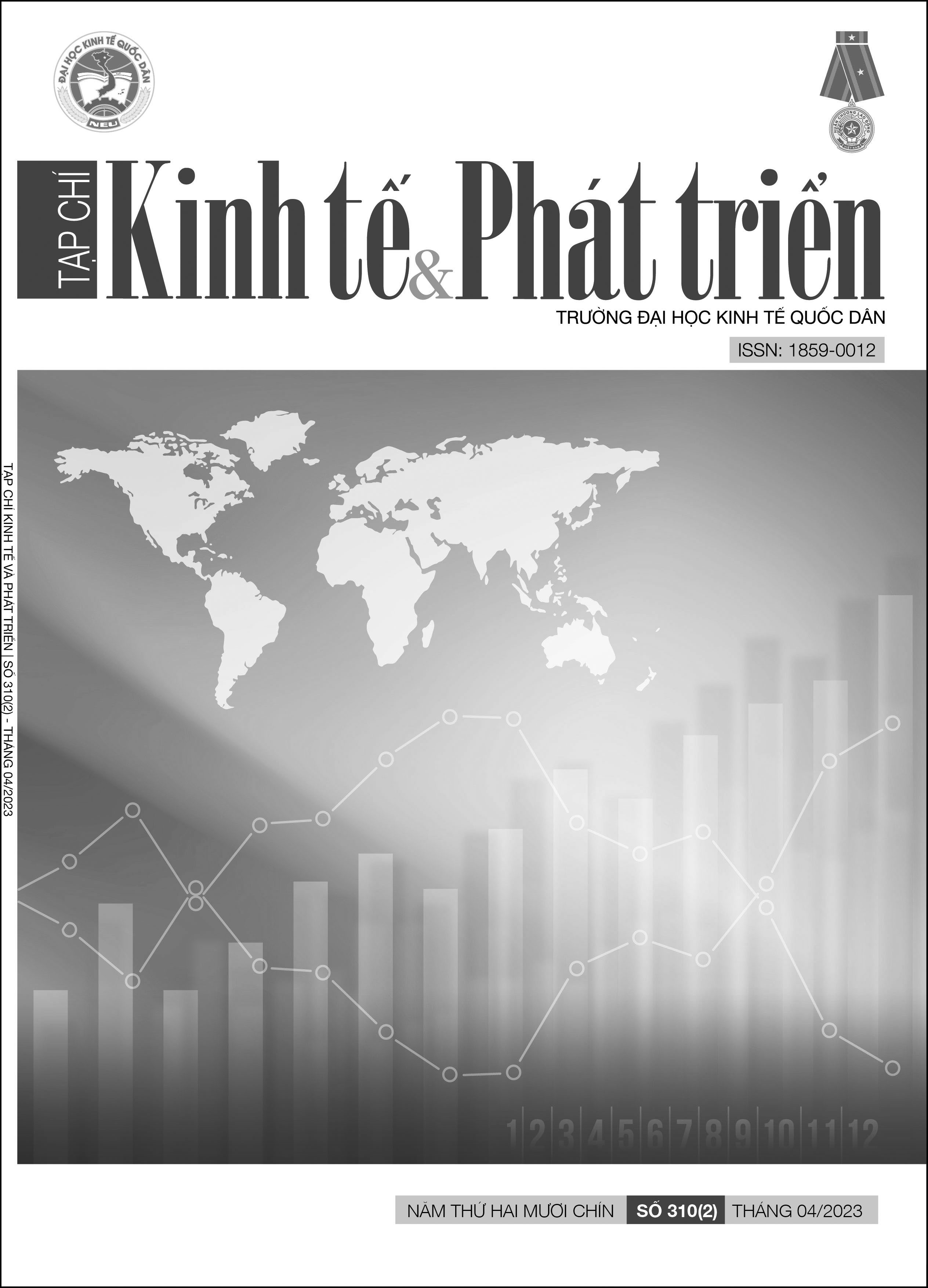Bảo hiểm thất nghiệp và xu hướng nắm giữ tiền mặt của doanh nghiệp
DOI:
https://doi.org/10.33301/JED.VI.1113Từ khóa:
Chính sách tiền mặt, kinh tế lao động, bảo hiểm thất nghiệpTóm tắt
Nghiên cứu này xem xét mối quan hệ giữa lợi ích bảo hiểm thất nghiệp và xu hướng nắm giữ tiền mặt của doanh nghiệp tại Hoa Kỳ trong giai đoạn 1991-2020. Nhóm tác giả đã chỉ ra rằng doanh nghiệp nắm giữ nhiều tiền mặt hơn khi lợi ích bảo hiểm thất nghiệp tăng lên, qua đó cung cấp một góc nhìn mới trong cơ sở lý thuyết về kinh tế lao động về động thái của doanh nghiệp khi chính sách bảo hiểm thất nghiệp thay đổi. Kết quả này không thay đổi khi nhóm tác giả sử dụng các thành tố của lợi ích bảo hiểm thất nghiệp làm biến đo lường cho bảo hiểm thất nghiệp, bao gồm mức bảo hiểm nhận được tối đa mỗi tuần và số tuần tối đa nhận được bảo hiểm thất nghiệp. Kết quả nghiên cứu này khuyến nghị những nhà chính sách cân nhắc phản ứng của doanh nghiệp đối với chính sách bảo hiểm thất nghiệp để có thể đưa ra những điều chỉnh phù hợp với bối cảnh kinh tế hiện tại.
Tài liệu tham khảo
Abowd, J. & Ashenfelter, O. (1981), ‘Anticipated unemployment, temporary layoffs, and compensating wage differentials’, in Studies in Labor Markets, Rosen, S. (Ed.), University of Chicago Press, Chicago, Illinois, USA.
Agrawal, A.K. & Matsa, D.A. (2013), ‘Labor unemployment risk and corporate financing decisions’, Journal of Financial Economics, 108(2), 449-470.
Attig, N., Ghoul, S.E., Guedhami, O. & Zheng, X. (2021), ‘Dividends and economic policy uncertainty: International evidence’, Journal of Corporate Finance, 66, 101785.
Bermpei, T., Kalyvas, A.N. & Leonida, L. (2020), ‘Local public corruption and bank lending activity in the United States’, Journal of Business Ethics, 171, 73-98.
Bermpei, T., Kalyvas, A.N. & Nguyen, T.C. (2018), ‘Does institutional quality condition the effect of bank regulations and supervision on bank stability? Evidence from emerging and developing economies’, International Review of Financial Analysis, 59, 255-275.
Devos, E. & Rahman, S. (2018), ‘Labor unemployment insurance and firm cash holdings’, Journal of Corporate Finance, 49, 15-31.
Duncan, E., Horvath, A., Iercosan, D., Loudis, B., Maddrey, A., Martinez, F., Mooney, T., Ranish, B., Wang, K., Warusawitharana, M. & Wix, C. (2022), ‘COVID-19 as a stress test: Assessing the bank regulatory framework’, Journal of Financial Stability, 61, 101016.
Ghaly, M., Dang, V.A. & Stathopoulos, K. (2015), ‘Cash holdings and employee welfare’, Journal of Corporate Finance, 33, 53-70.
Gruber, J. (1997), ‘The consumption smoothing benefits of unemployment insurance’, American Economic Review, 87(1), 192-205.
Katz, L.F. & Meyer, B.D. (1990), ‘The impact of the potential duration of unemployment benefits on the duration of unemployment’, Journal of Public Economics, 41(1), 45-72.
Keynes, J.M. (1936), The general theory of employment, interest, and money, Palgrave Macmillan, London, UK.
Nguyen, T.C. (2021), ‘The effect of financial crisis on income inequality’, Development Policy Review, 40(6), e12600.
Nguyen, T.C., Le, T.H., Nguyen, T.N.P. & Tran, T.Q. (2022), Economic policy uncertainty and corporate dividend payouts, retrieved on February 2nd 2023, from <http://dx.doi.org/10.2139/ssrn.4099595>.
Phan, H.V., Nguyen, N.H., Nguyen, H.T. & Hegde, S. (2019), ‘Policy uncertainty and firm cash holdings’, Journal of Business Research, 95, 71-82.
Rebollo-Sanz, Y. (2012), ‘Unemployment insurance and job turnover in Spain’, Labour Economics, 19(3), 403-426.
Serfling, M. (2016), ‘Firing costs and capital structure decisions’, The Journal of Finance, 71(5), 2239-2286.
Topel, R.H. (1983), ‘On layoffs and unemployment insurance’, American Economic Review, 73(4), 541-559.
Topel, R.H. (1984), ‘Equilibrium earnings, turnover, and unemployment: New evidence’, Journal of Labor Economics, 2(4), 500-522.
Winkelmann, L. & Winkelmann, R. (1998), ‘Why are the unemployed so unhappy? Evidence from panel data’, Economica, 65(257), 1-15.





